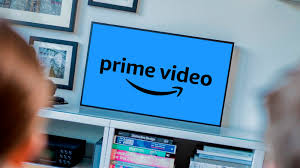Amazon has announced plans to significantly increase the number of ads on Prime Video by 2025, after running a test over the past eight months. While the company observed that viewers were less bothered by ads than initially expected, this move raises an important question: Will more ads make watching Prime Video less comfortable for its users?
Testing Viewer Patience
Since the initial rollout of ads, Amazon found that most Prime Video subscribers continued watching without a significant increase in cancellations. This outcome has encouraged the company to pursue a more ad-heavy model, a strategy aimed at boosting revenue. However, as ads become more frequent, the real concern lies in whether Prime Video can maintain the same level of user satisfaction it currently enjoys.
Amazon’s current ad load on Prime Video is light, similar to traditional TV breaks but without overwhelming interruptions. However, by 2025, these interruptions could become more noticeable, which might change how viewers feel about the platform. The introduction of ads could disrupt the seamless, ad-free experience Prime Video users have become accustomed to, leading to dissatisfaction.
Competing in the Ad-Supported Market
Amazon’s decision to ramp up its ad strategy is partly influenced by competitors such as Netflix, Disney+, and Max, who have already introduced ad-supported subscription tiers. These platforms aim to cater to different audience segments—those willing to tolerate ads for a lower subscription fee and those willing to pay more for an ad-free experience.
Prime Video currently offers an ad-free tier at an additional cost for users who prefer uninterrupted viewing. Interestingly, most Prime subscribers have not opted for the ad-free tier, which Amazon takes as a sign that viewers are not overly troubled by occasional ads. Yet, as the ad volume increases in the coming years, it remains to be seen whether this trend will hold, or whether more users will migrate to the ad-free option.
The Push for Interactive Ads
What makes Amazon’s strategy different from its competitors is its plan to introduce interactive and shoppable ads. Instead of the typical passive ad-watching experience, these interactive ads would allow viewers to engage with products featured in the ads and purchase them directly from Amazon. For instance, if viewers see a product in an ad, they could click on it and add it to their Amazon shopping cart without leaving the Prime Video platform.
While Amazon believes this approach could make ads more engaging and less intrusive, it also risks overwhelming viewers with commercial content disguised as interactivity. Viewers who just want to relax and watch their favorite shows might find this constant focus on shopping an unwelcome distraction.
Will Viewers Embrace More Ads?
Ultimately, Amazon’s goal is to increase revenue through advertising while keeping viewers engaged with content. But the key question remains: How will Prime Video users react to a higher ad load? For now, many seem unfazed by the current level of ads, but there is a fine line between tolerable interruptions and frustratingly frequent breaks.
As the platform gears up for this shift, viewers may face a difficult decision. Will they continue with the ad-supported tier, or will they feel compelled to pay more for an uninterrupted experience? The real test will come as ads become more prevalent on Prime Video by 2025.




